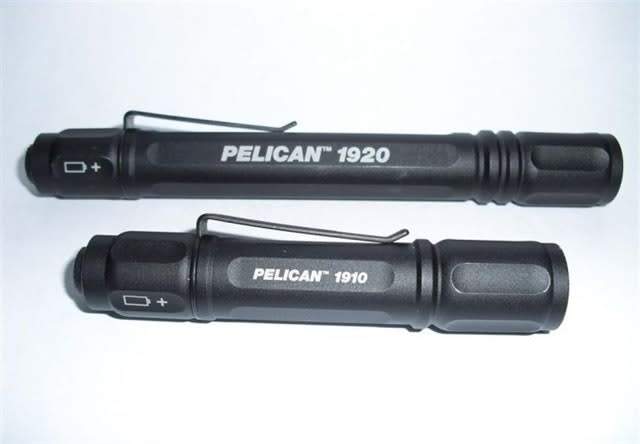After loading the batteries and feeling the lights in my hand, I continued to admire what has become one of my favorite Pelican products. The durable aluminum casing and end cap push-on switch have a great feel and contribute to the convenience of the lights. Both lights also come with a pocket-clip style attachment which comes in handy for duty bag attachment or pocket carrying.
The performance of both lights far exceeded my expectations, especially operating on standard AAA batteries. Pelican rates the light output on the 1910 at 39 lumens and the 1920 at 67 lumens. Realistically, both lights are plenty bright for an emergency back-up light for approaching traffic stops. In addition, they provide enough light to temporarily blind a subject. I tested that at the shift table.
Pelican rated the 1910 with a one-hour runtime. After a few uses on the 1910, I turned it on and set it on my passenger seat. It ran non-stop for 56 minutes confirming Pelican's run time. The 1920 is rated to run 2 3/4 hours.
I'll now refer back to my burning question. How could I use the 1910 and 1920 while on duty? It hit me during one night shift. The 1920 makes a perfect alley light. When the light-bar alley light is too much of a flood light or up too high to get a look at the ground, the 1920 is perfect. The spotlight isn't always practical, and the 1920 is a direct extension of your hand. It fits in your hand nicely and lights up everything you need. You can direct its beam under vehicles or between houses with ease.
I'm already a fan of Pelican, and these two products only solidify my admiration.












